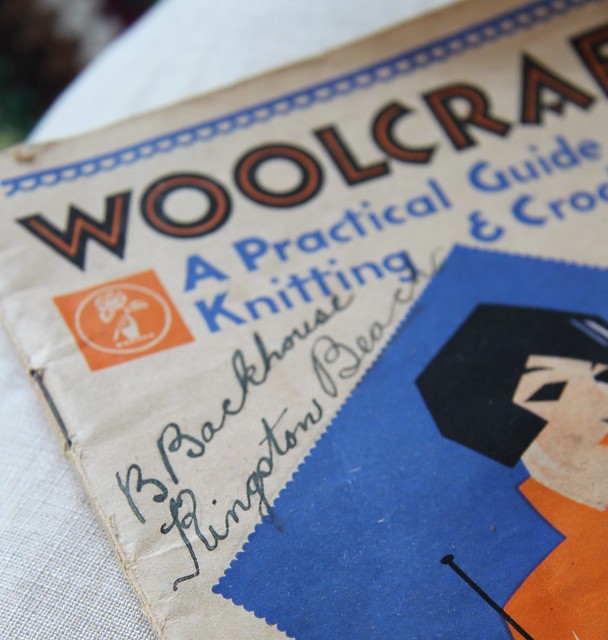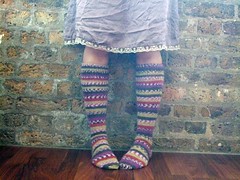
One of my favourite things when teaching a knitting class is to talk about the cultural history of knitting a little bit. It's fun to think about how us knitters have centuries of knitting background to draw from and to feel like we're carrying on a lovely, important tradition.
Over the past couple of weeks I have had some lovely knitting history surprises! First up is this lovely copy of a notice of prizes for "home made woolen articles" in 1850. It was sent to me from a very kind online friend. Isn't it lovely? It says that the prizes are to encourage "trade in home manufactured articles." Not only is it a great little piece of typography, it tells us a bit about what it may have been like to be a knitter in Victorian Britain. Queen Victoria was a bit of a knitter herself, but I have a feeling the word "industrial" wouldn't have been applied to her handiwork! Thanks, Jo, for sending this!

Also in the post last week was a parcel from Australia! While visiting Tasmania, my mother-in-law came across a gem of a fibre arts shop called Spindle Tree. It seems like a really interesting place; they are a cooperative that promotes fibre arts in Tasmania and provides studio spaces, classes, and a shop to sell Tasmanian-produced textile products and yarns. Everyone we know who has been to Tasmania loves it, so it will have to be a stop on our next trip to Australia. Also in Hobart, my mother-in-law found a this vintage knitting booklet and was kind enough to send it over to me here in London. There's no date on the booklet and we've been debating which era it may have come from... any ideas?

The illustration on the cover is fantastic, don't you think? My favourite pattern (or "recipe" as the booklet calls it!) is one for "knee caps." Funny, huh? MIL thinks women may have used these when washing floors.
There's a bit of handwriting on the front cover - I did a little research and I think it says, "B Backhouse, Kingston Beach." Turns out Kingston Beach is a coastal suburb of Hobart in Tasmania and it looks like a lovely place. I just love imagining Ms Backhouse knitting by the sea!

The last little knitting surprise I have to share with you came to me via my last post, dedicated to garter stitch. I babbled on for a while about its virtues and also about one of its most influential proponents, Elizabeth Zimmermann. I also shared a few of my favourite garter stitch patterns out there at the moment. Lucky me, the designer of the stunning Piper's Journey from Quince & Co's Scarves, etc collection was alerted to my mention of her shawl, and got in touch! As it turns out, Paula is a lovely knitter and bagpiper from Illinois, as well as host of the podcast The Knitting Pipeline, and shared with me that EZ "was, or is, the biggest influence on my knitting. I kept a correspondence with her for years when I was a young knitter. Occasionally I read one of these letters on my podcast." Needless to say, I was delighted and immediately began downloading Paula's back catalogue. I highly recommend tuning in to her show, and not just to hear these letters. I am absolutely in love with the idea of Paula sharing her correspondence with a knitting legend as with knit along with her.
So that was my exciting week of knitting history! Do let me know if you have any "vintage" knitting stories to share - they're always welcome here.










3 comments:
What an exciting week! Looking forward to checking out this podcast, thanks for sharing. I love the illustration, its as if the woman is considering whether she has enough yarn to finish her project... I've been there! I love the knitting history stories of fishermen and their gansies. The book, Cornish Ganseys & Knit Frocks is a great collection of stories and stitch patterns.
@kristenmakes - Ooh I'll have to check out that book!
Jhumki earring, a dazzling fusion of tradition and contemporary elegance! Crafted with meticulous attention to detail Pearl earrings exquisite earrings are designed to elevate any ensemble with their timeless charm.
Post a Comment